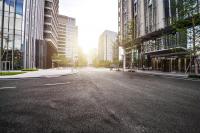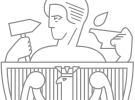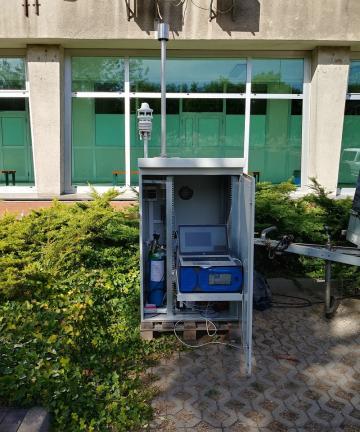Concrete and nature are not worlds apart

Innovative precast surface units made of pervious concrete are supposed to improve water conditions, air quality and more, photo: onlyyouqj/freepik
Places dominated by concrete surfaces appear environmentally unfriendly and seem to be at odds with the sustainable development ideal. A project by the WUT Faculty of Civil Engineering and F.B.I. Tasbud S.A. may change this perception – all thanks to innovative precast surface elements.
Concrete is the construction material most frequently used by man. However, its popularity comes hand in hand with considerable notoriety, strongly related to highly developed road transport. The latter is directly responsible for exhaust gas emissions and for the release of substances such as toxic nitrogen oxide and dioxide into the atmosphere. A project consortium whose members include the WUT Faculty of Civil Engineering seeks to develop special precast concrete elements which will not only help to clean the air, but also to filter rainwater and reduce noise.
Photo-catalysis for better breathing
WUT researchers seek to boost the air purification effect by using a special mix of photo-catalysts, i.e. compounds which trigger a chemical reaction or influence its rate as a result of absorbing solar radiation. The WUT FCE team already boasts some experience in projects relying on the heterogeneous photo-catalysis mechanism, but this time around, it will be used in a much more efficient way. The plan is to develop a completely new group of photo-catalytic cement products, which will be made of pervious concrete, and to use what is known as second-generation photo-catalysts, which are also active in the visible light spectrum.
Poland belongs to a group of countries with a relatively low solar radiation intensity during the year. The use of first and second generation photo-catalysts will make air purification more efficient in months with low UV irradiation while maintaining suitable performance in months with sufficiently high irradiation levels.
As explained by mgr inż. Karol Chilmon, thanks to the pervious structure, photo-catalysis will not be limited to the surface of the element, but will also occur in the adjacent layer, which will also increase air purification efficiency.
Quieter, cleaner
Porosity will also enhance the sound wave damping effect, thus reducing noise, which is ubiquitous in urban agglomerations. The WUT team had the opportunity to test the patent when working on materials for the production of track suppressors – elements used to reduce railway noise.
Another important characteristic of the new precast elements is their water filtering capacity. The underlying mechanism will be similar to the one known from filtration systems used all over the world. Contaminants will be immobilized in the structure of the concrete and the quality of the water penetrating into the soil will be significantly better.
Research indicate that one square meter of a porous surface may enable between 80 and 720 liters of water per minute to seep into the ground, which may significantly reduce stormwater runoff. Combined with a filtration mechanism whose efficiency may reach up to 80%, the solution favors small-scale water retention.
“If we are able to combine the traditional properties of pervious concrete, i.e. water permeability and noise reduction, with enhanced photo-catalytic properties, it will be a unique innovation on a global scale. Nothing of the kind has been used anywhere else in the world,” stresses mgr inż. Karol Chilmon.
Tests
The project envisages the establishment of two experimental zones to test the effectiveness of the solution in urban and non-urban conditions. The first site will be located within WUT grounds and the other outside Warsaw, near a national-grade road with heavy traffic.
The project entitled “Multi-functional photocatalytic precast surface elements made of pervious concrete to improve water conditions and air quality” is financed from European Union funds as part of the Smart Growth Operational Programme.
The project manager is dr inż. Wioletta Jackiewicz-Rek.







